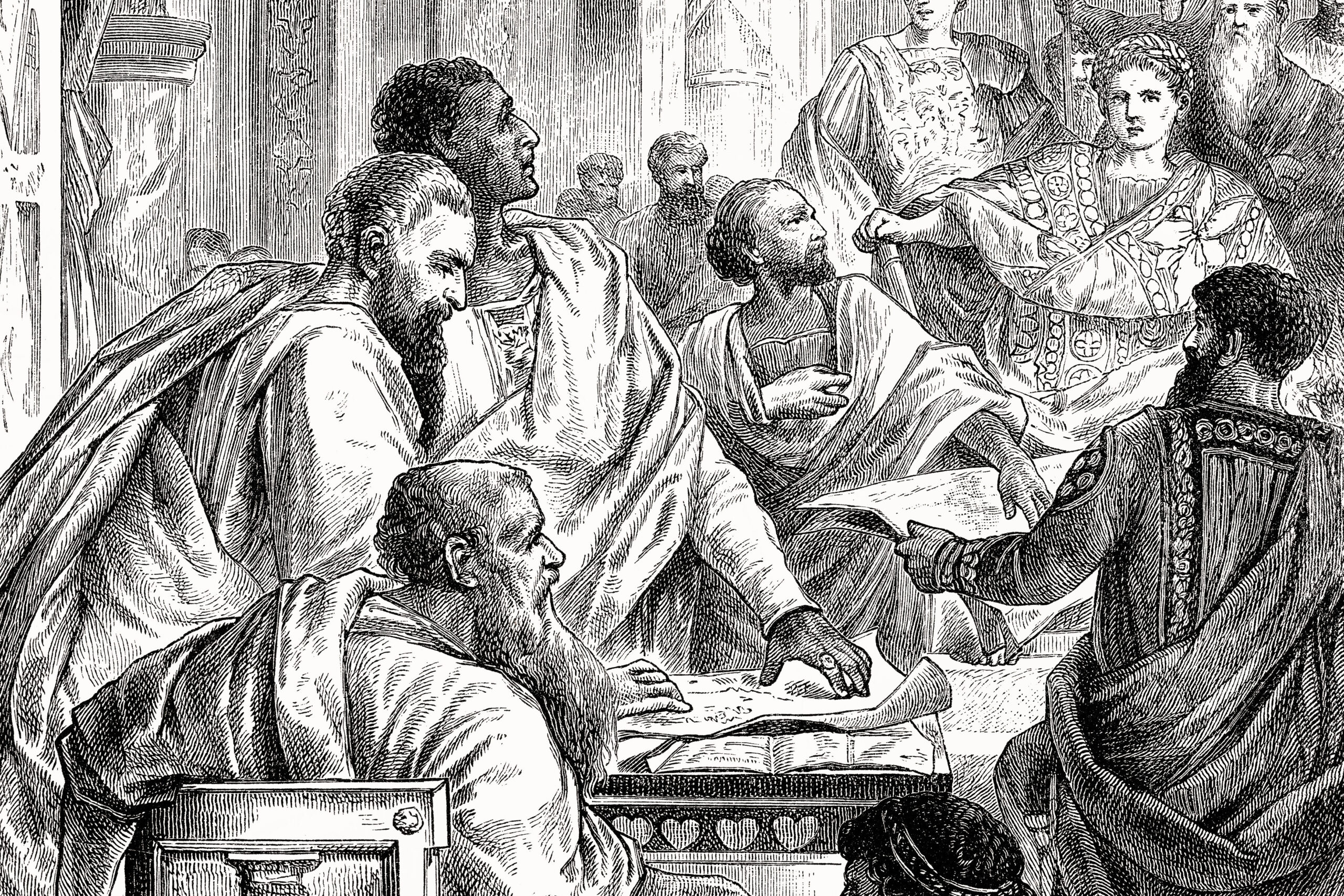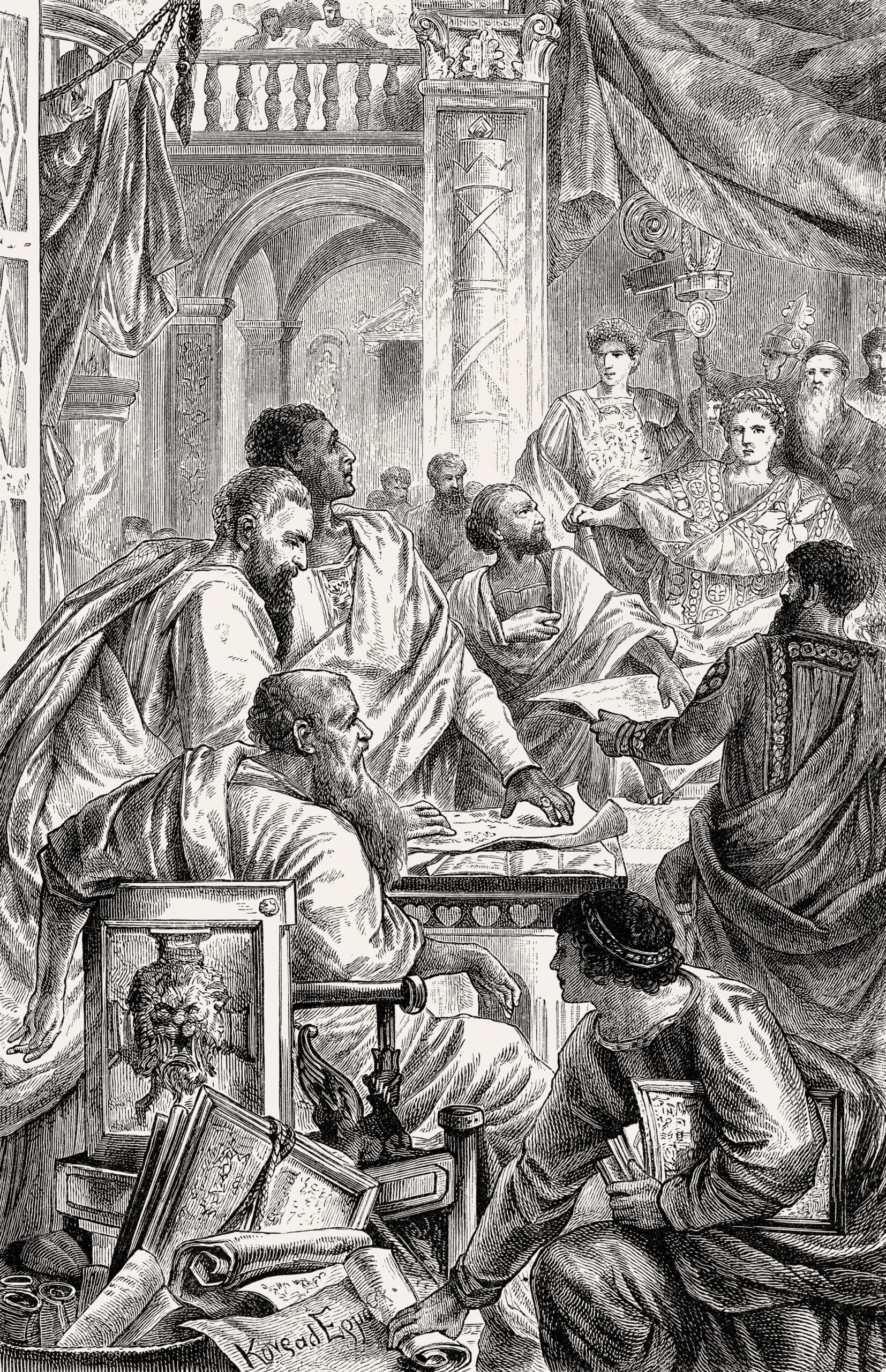We Believe
by Guest

Commemorating Christian unity 1,700 years after the Council of Nicaea.
This is a significant year for important commemorations: 2025 marks the 160th anniversary of the founding of The Salvation Army in 1865, as well as the 145th of the Army’s expansion to the United States in 1880. It’s also 1,700 years since the First Council of Nicaea—an ecumenical council of the early Church that took place in the ancient city of Nicaea.
Although it happened long ago, in A.D. 325, this council was so important to the development of the Christian Church and its doctrine that it’s worth reminding Salvationists and all Christians in the 21st century how we are still very much living in the legacy of Nicaea.
A gathering of elder church leaders to discuss theological matters may not seem all that exciting, but if you look closely, the events that took place during the First Council of Nicaea were riveting. Consider the times. Just a few years prior to the council being called, Christianity was still very much a persecuted religion in the largely pagan Roman Empire. Many historians today believe that Christians were torn apart by wild animals in Rome’s Colosseum for public spectacle. Some Roman emperors were tolerant of the growing Christian religion within their realms, but others like Nero and Diocletian treated the Christian community very badly and persecuted them in ways far too graphic to describe here. But by the early fourth century, times were changing.
Protecting a movement
Constantine the Great (272–337) became emperor in 306, and while accounts of his conversion experience before a key battle differ in the details, he soon became an ally of Christians. In 313, he agreed to the Edict of Milan, which said that Christians would no longer be persecuted and were in fact protected under Roman law. Imagine what this meant for a largely underground movement that could now come out of hiding and publicly identify as followers of the Way of Christ.
Twelve years later, Constantine called for a great Church council to convene in the small city of Nicaea (in modern-day Turkey). Historians have theorized that Constantine wanted a cohesive form of Christianity to prevail in his empire, not one that was fractured with multiple theological differences. To bring this about, he had to get everyone together in the same room to agree on the fundamentals. This is what Nicaea sought to achieve.
Around 250 to 300 senior church leaders took part from all over the empire. Just a few years before, many of them might have been in hiding from the authorities. Now they were summoned to a council in grand style, paid for by the imperial treasury. Though no official documents exist of all that transpired over the course of three months, we know what issues were discussed based on the writings of those in attendance.
Clearly, this was a gathering of imperfect people trying their best to use near perfect language to define what Christians believe. The main takeaway from Nicaea is a confessional statement of beliefs called the Nicene Creed. It is based on earlier creeds written in Jerusalem and Antioch. It has since become one of the main statements of faith for the majority of Christians around the world.

Depiction of the first ecumenical council in the Christian Church, held in Nicaea (modern day Turkey), A.D. 325.
Informing today’s faithful
The following excerpts from the Nicene Creed are taken from The Salvation Army Handbook of Doctrine, published in 2010:
“We believe in one God the Father almighty, Maker of Heaven and earth, and of all things visible and invisible.” (Do you see some parallels to the first and second doctrines of The Salvation Army? There’s the communal “We believe,” followed by an assertion of God as the “Creator, Preserver, and Governor of all things.”)
“And in one Lord Jesus Christ, the only-begotten Son of God, begotten of his Father before all worlds, God of God, Light of Light, very God of very God, begotten, not made, being of one substance with the Father.” (They were really hammering home the point of Christ’s equality with God. Our third and fourth doctrines support this part of the creed when we talk about the “Divine and human natures” being united in the person of Jesus, so that He is “truly and properly God and truly and properly man.” Salvationists affirm the belief that “there are three persons in the Godhead—the Father, the Son and the Holy Ghost, undivided in essence and co-equal in power and glory.”)
One cannot read the 11 doctrines of The Salvation Army without seeing those Nicene expressions of Christian belief coming through their words. Today, when scripture and doctrine seem up for debate, how reassuring that our theology is in solid alignment with the confessions and creeds of the early Church. It grounds our movement in a faith that is truly apostolic, a faith that began with the teachings of Jesus and was passed on by his disciples through the wide scope of human history and countless cultures and languages, a faith that is still guiding and informing us today. Protestants, Catholics, and Orthodox Christians the world over are united in their endorsement of the Nicene Creed. Based entirely on sacred scripture, it is a canon (measurement or rule) of faith.
Handbook of Doctrine
Our Handbook of Doctrine stresses the importance of the creed for Salvationists: “The Nicene Creed contains the affirmation, ‘We believe in one holy, catholic (universal) and apostolic church’. … Thus the Church should be ‘one’ despite the plurality of expression and denominations; holy, that is set apart for the purposes of God.” It should be “complete in its proclamation of the gospel, for all people and able to meet every human need; and apostolic, or deriving from the teaching of the apostles.”
To celebrate the 1,700th anniversary of the First Council of Nicaea this year, take the opportunity to read those powerful words. Or better yet, say them aloud together in a Bible study or prayer group. How does the Nicene Creed inform your faith as a Christian and a Salvationist? You may find the words of the creed in The Salvation Army’s online Handbook of Doctrine.
When we recite our Salvation Army doctrines and the early creeds of the Church and believe them with our hearts, we are standing on a living tradition of faith: We believe!
by Rob Jeffery, director of the USA Eastern Territory’s Heritage Museum

